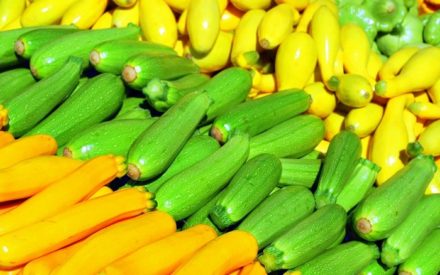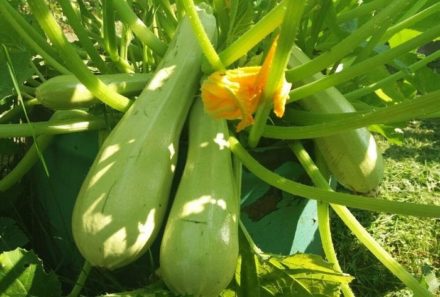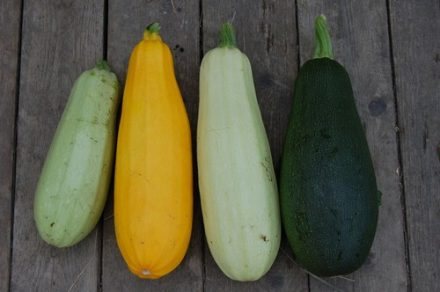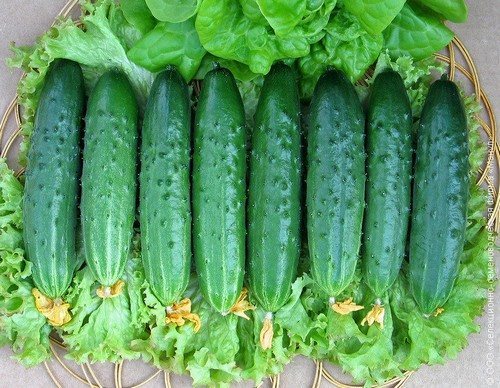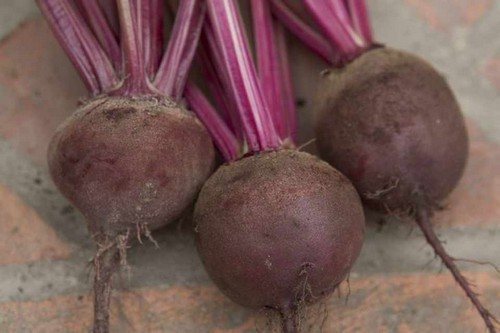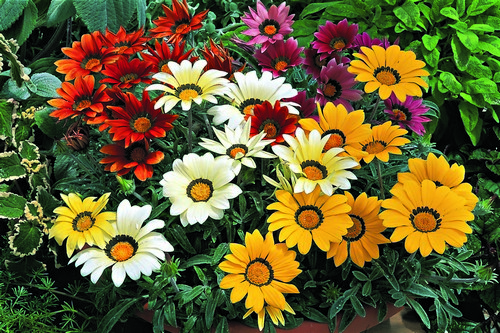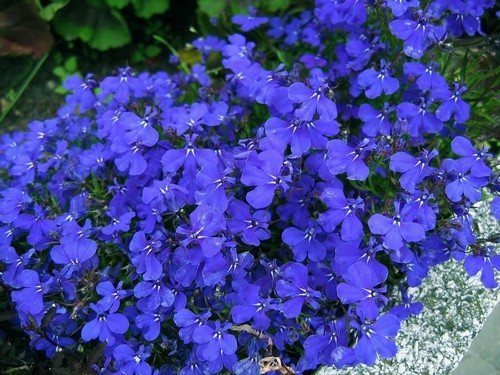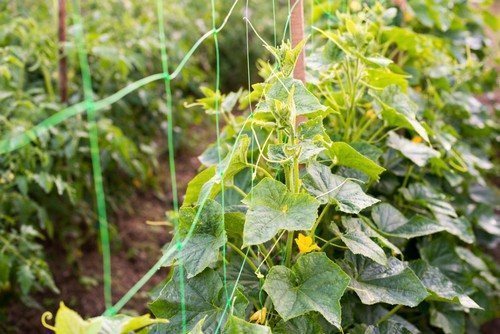Zucchini is a crop that does not require special care and produces an early and abundant harvest. The fruits of this plant are used for preparing hot and cold dishes, as well as preparations for the winter. Previously, housewives were not interested in varietal diversity and simply sowed homemade seeds. Since zucchini is a crop prone to cross-pollination, new varieties with the most unexpected properties often appeared in the garden beds.

Today there is a wide variety of varieties that differ not only in the color of the fruit, but also in the speed of ripening, yield, growth type and pollination characteristics. Only by taking into account all the characteristics can you choose a variety of zucchini that is suitable for specific purposes and climatic conditions of the region.
Emerald
An early ripening variety with good yields. Simultaneous ripening of the crop is characteristic. Forms a bush with one stem of short length. The leaves are large and rich in color.
The fruits are cylindrical in shape, dark green in color with small light spots. Zucchini reaches a weight of 800-1400 g. Productivity per m2 up to 5 kg.
The variety is suitable for growing through seedlings and direct sowing in an open bed. Seedlings are planted in open ground 25 days after germination. Additional lighting of seedlings is the key to early and abundant fruiting.
Needs regular watering and feeding.The first fruits ripen on the 45th day after germination.
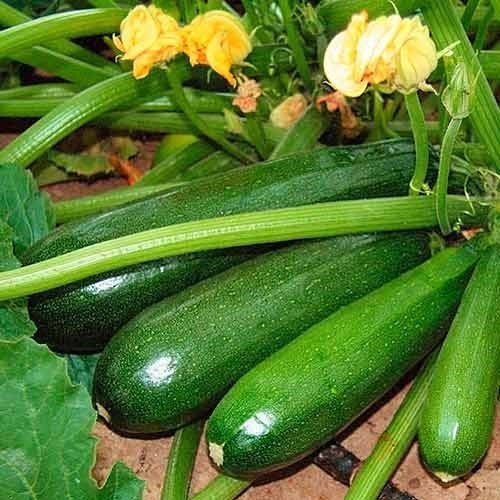
Iskander
An ultra-early variety with fruits of a classic light green color. The first harvest appears one and a half months after sowing the seeds, provided that the temperature conditions are favorable. Long fruiting period. There are female and male inflorescences on one bush, so the harvest is guaranteed even if the weather is cold and rainy.
The seeds are sown in the ground, but young shoots need film cover. The plant needs good lighting. For successful cultivation, zucchini must be planted at a large distance from each other. Does not tolerate the proximity of squash.
The optimal temperature of the environment and water for irrigation is +20 ° C. To increase the yield, the bushes are watered and fed. 6 interesting varieties of truffle tomatoes that can attract even an avid gardener
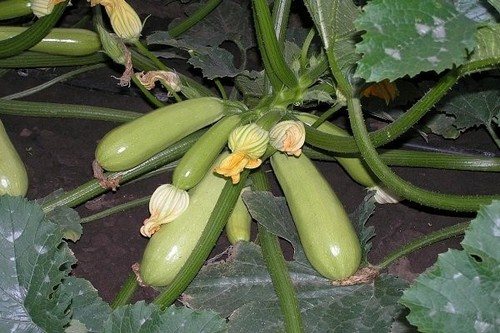
Plants begin to bear fruit 35-40 days after the sprouts appear. The bush is very compact and does not need a lot of space. Flowers on the bush are mainly female, but male ones are also very rare. The plant is self-pollinating and can bear fruit under unfavorable atmospheric conditions. But if you sow this variety in a greenhouse, you need to pollinate artificially. For this purpose, use a brush or a piece of cotton wool, with the help of which pollen from the male flower is transferred to the female.
Zebra squash is valued for its cold resistance. It is suitable for growing in northern regions. Up to 15 kg of fruit can be collected from one specimen. The squash has a green color with lighter longitudinal stripes and spots on the surface. At technical maturity, the fruit reaches 600 g, biological maturity – up to 1600 g. Zucchini have good transportability.
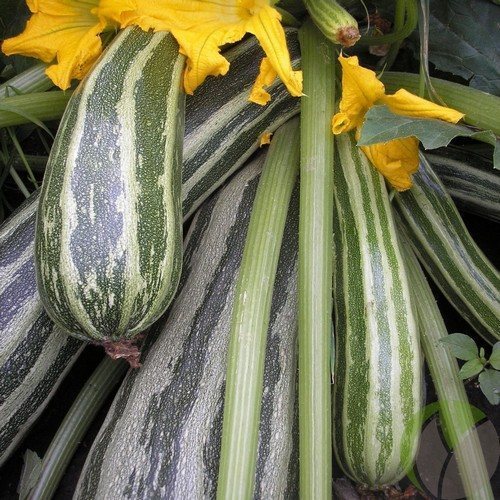
Dragon
An early ripening self-pollinating variety with the best keeping quality. The skin is thin, dark green, almost black. The pulp is dense, light beige. The fruits reach two kilograms and are stored without refrigeration all winter.
Can be planted by seedlings or sown directly into the garden bed. The bushes are planted at a distance of 70 cm from each other. From one m2 up to 8 kg of fruits are collected. It has good immunity to most diseases. Young zucchini is used to make fresh juice or salad.
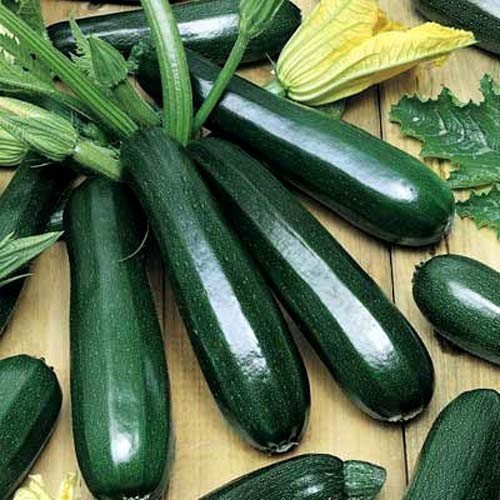
Helena
Bush variety with yellow fruits and pulp. The first zucchini ripens 45 days after germination. The surface is smooth. The weight of the fruit ranges from 500 to 900 g. The pulp is dense with high taste.
The distance between bushes should be 60 cm. It is best to plant after cabbage, potatoes and legumes. Needs good lighting, regular watering and fertilization. The bush produces one short stem.

Zucchini contains a large amount of minerals and vitamins. The pulp contains fiber and is well absorbed by the body. Zucchini removes toxic substances from the body and is suitable for children's and dietary nutrition, as well as for people with diabetes.
To successfully grow this crop, you cannot plant zucchini in one place for 3-5 years. Also, the plant does not tolerate proximity to melon and watermelon. If a pumpkin grows nearby, cross-pollination will occur and the fruits will lose quality. In order to extend the fruiting period, it is worth regularly picking the fruits after reaching a length of 25 cm at least twice a week.The plants should also be fed and watered regularly. Zucchini is planted in open areas without shade.


